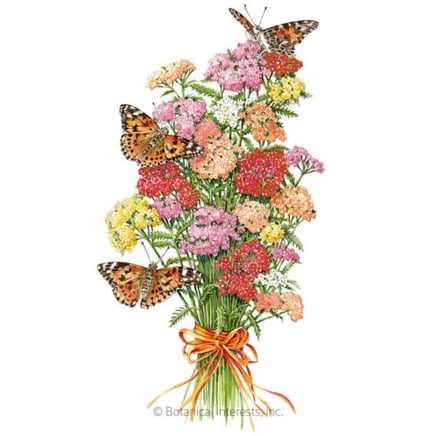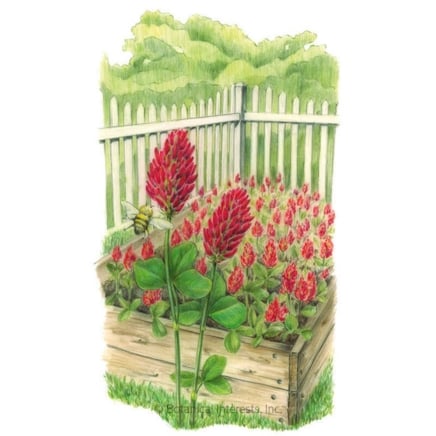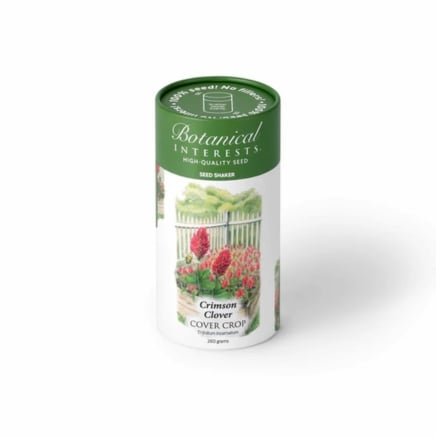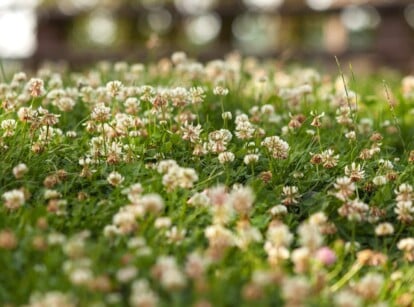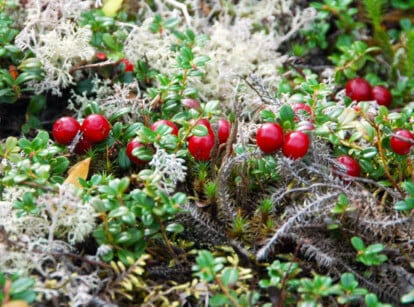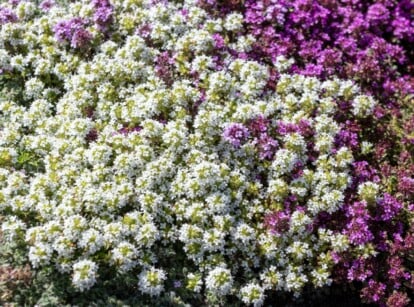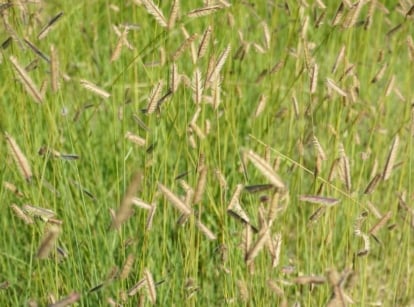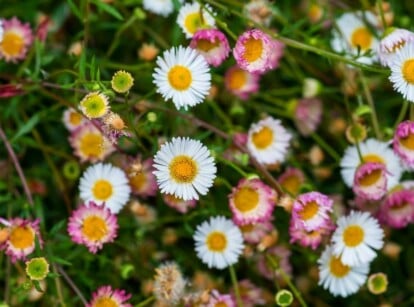13 Grass Alternatives You Can Walk On
Say goodbye to the lawn and welcome these grass alternatives you can walk on! Walkable plants often need less water and maintenance than grasses. They create sustainable lawns that are just as appealing, if not more, than grass ones. Former landscaper Jerad Bryant shares 13 of the best alternatives to try.

Contents
Perhaps you’re tired of looking at plain green grass blades, or you’re sick of mowing once a week. Despite your grievances, there are easy solutions to create the lawn of your dreams. Landscaping doesn’t have to be a lot of work! When you make the garden work for you, you’ll enjoy it more and be more inclined to spend time in it.
Grass alternatives come in all shapes and sizes, including ones you can walk on. To choose the best one, we must first inspect your yard. Is it shady or sunny? Does it have lots of moisture, or is it pretty dry? And is the soil well-drained or soggy? The answers to these questions will help you determine the best groundcovers for the yard.
Some yards may require more than one alternative plant! Let’s say half of your lawn sits under direct sunlight all day while the other half is shady. You’ll want to plant a sun lover like creeping thyme under direct sunlight and a shade lover like moss on the other side.
So, let’s get into it! You can walk on these 13 plants as alternatives to a grass lawn. Grab a shovel and some gloves, and get ready to smother your grass!
Blue-Star Creeper

|
|
botanical name Isotoma fluviatilis |
|---|---|
|
|
sun requirements Partial shade |
|
|
height 2-3” |
|
|
hardiness zones 6-8 |
Blue-star creeper is an Australian native plant, though it performs well in U.S. gardens. This low-growing spreader creeps into bare sites, covering them with lush green foliage and white flowers with blue hues.
This groundcover prefers growing in shady conditions, and it can handle between three and six hours of daily direct sunlight. It’ll grow best with regular water during the growing season, but it can resist temporary droughts after establishing itself in the yard.
I have this plant in my ornamental shade garden, and it tolerates plenty of foot traffic. The only downside is its free-spreading nature; you may have to dig up some of it if it spreads into your garden beds.
Moss

|
|
botanical name Genera in the division Bryophyta |
|---|---|
|
|
sun requirements Partial to full shade |
|
|
height 1-4” |
|
|
hardiness zones 4-9 |
It’s difficult to pin down mosses because they’re incredibly diverse! Unlike plants, mosses lack a vascular system. They rely on cell-to-cell communication rather than vein-like tubes that distribute nutrients and moisture.
Though they lack a vascular system, mosses are tough, diverse, and beautiful. Most prefer shady and moist conditions to thrive. They’ll often dry in summer and slow their growth, then rehydrate in the fall to regrow.
To plant moss, either transplant clumps onto bare soil or make a moss milkshake! Combine moss clumps with beer, buttermilk, potato water, or yogurt in a blender. Add water so the mixture has a thick consistency. Then, paint, splatter, or pour the mixture onto bare sites. Keep the soil moist while the mosses sprout; they may take half a year or longer to establish themselves.
Clover

|
|
botanical name Trifolium spp. |
|---|---|
|
|
sun requirements Full sun to partial shade |
|
|
height 4-24” |
|
|
hardiness zones 3-11 |
Clover lawns are replacing grass ones throughout the country! You can easily walk on these grass alternatives as a lush, drought-tolerant lawn. Clovers may naturally creep into the space or sprout from seeds you intentionally plant. With dozens of species available, there’s sure to be a clover type that’s perfect for your yard.
I find white and purple clovers throughout my lawn, though I never planted them! These two types sprout tons of flowers that attract hungry bees and pollinators. Let them thrive if you find them, or sow seeds in bare areas. Avoid annual clovers, as they die after they produce seeds, leaving empty patches in their wake. And take care not to plant clovers that crowd out native areas.
Though clovers look spectacular during the growing season, they often go dormant during the winter. This may cause bare patches that generate mud during the cold months. Consider planting winter annuals to prevent mud until the clovers sprout anew in spring.
Wood Sorrel

|
|
botanical name Oxalis spp. |
|---|---|
|
|
sun requirements Full sun to partial shade |
|
|
height 2-24” |
|
|
hardiness zones 1-9 |
Wood sorrels are similar to clovers, except they’re much more tolerant of shade. They naturally grow on forest floors with dappled sunlight, consistent moisture, and fertile soil. Many are native to North America, making them excellent choices for native plant lovers.
A few weedy wood sorrels may pop up on their own. You’ll see creeping, common yellow, and great yellow wood sorrels in lawns throughout North America.
Replace grasses with these species for hardy, tough, and reliable plants. They perform well despite droughts, foot traffic, and heat or frost. Consider a native Oxalis species if they’re local to your area, as they’ll grow well without extra pampering or care.
Creeping Thyme

|
|
botanical name Thymus spp. |
|---|---|
|
|
sun requirements Full sun |
|
|
height 1-6” |
|
|
hardiness zones 3-9 |
Creeping thymes are sun-loving species that excel in hot, dry exposures. They sprout small leaves on low-growing stems that blanket the ground as they grow. In spring, white, pink, or purple blooms emerge that attract pollinators with nectar and pollen.
Though tough, these thyme species need some care to establish themselves. Plant them in early spring while the weather is mild, and keep their roots moist while they adapt to the site. Position each plant a few inches apart, as they’ll spread over time to fill the bare spaces.
There are a few creeping thymes to choose from. Opt for Thymus herba–barona for aromatic, caraway-scented leaves, or choose wooly thyme Thymus pseudolanuginosus for soft, fluffy leaves. ‘Elfin’ is a cultivar that grows lower to the ground than the other types, staying under three inches tall at maturity!
Corsican Mint

|
|
botanical name Mentha requienii |
|---|---|
|
|
sun requirements Full sun to partial shade |
|
|
height 1-3” |
|
|
hardiness zones 6-9 |
Mint tends to be unruly and aggressive, which is why most gardeners keep it contained in pots or raised beds. Corsican mint is one tough type you’ll want to spread everywhere. It’s low-growing, sprouts tiny leaves, and has a minty aroma. You’ll fill the air with the lovely fragrance each time you walk on this grass lawn alternative.
Though Corsican mint grows well in sunny sites, it needs consistent moisture to thrive. Plant it where sprinklers hit it during summer or in a partially shady area that doesn’t dry out.
Like other mints, this type may spread outside of your preferred range. It has shallow roots, so you can dig up unwanted portions and move them to new sites. Consider edging the lawn with borders to keep the mint in its place.
Creeping Jenny

|
|
botanical name Lysimachia nummularia |
|---|---|
|
|
sun requirements Full sun to partial shade |
|
|
height 2-4” |
|
|
hardiness zones 3-8 |
Creeping Jenny creeps so well that it’s invasive in some states! You’ll see it escaping from gardens and spreading into wild areas. It sprouts oval green leaves on long, rooting stems that grow low to the ground. Yellow flowers may appear in spring, though they’re a rare occurrence.
Creeping Jenny is ideal to replace lawns, as it competes well with grasses and groundcovers. The plant will spread through seeds, rooting stems, and underground rhizomes to form thick, impenetrable mats of foliage.
Because this spreader may invade your garden beds, it’s best to limit its growth with pavers, edging, or borders. Use rocks, logs, or whatever you have on hand to form a perimeter around the site, and pull up unruly seedlings as you spot them.
Creeping Mazus

|
|
botanical name Mazus miquelii |
|---|---|
|
|
sun requirements Full sun to partial shade |
|
|
height 3-6” |
|
|
hardiness zones 5-8 |
Creeping mazus is an impressive plant! It features spoon-shaped leaves and purple-white blooms on free-rooting stems. The blooms decorate the entire plant, creating a showstopping mat of color.
Foot traffic and mowing are no problem for creeping mazus. You can walk and run on this grass alternative as much as you’d like! It responds well to mowing, growing new leaves off its abundant stems. Its hardy nature makes it a problem in some northern, temperate regions. Consider planting a native alternative if creeping mazus is invasive in your state.
For the brightest, greenest leaves, water your plants once a week during the growing season. They’ll appreciate some organic fertilizer if their soil is low in nutrients. A soil testing kit is an easy way to test the dirt, though your plants will also tell you they’re hungry for nutrients by growing poorly with yellow leaves.
Irish and Scotch Moss

|
|
botanical name Sagina subulata, Sabulina verna |
|---|---|
|
|
sun requirements Full sun to partial shade |
|
|
height 1-2” |
|
|
hardiness zones 4-8 |
Irish and Scotch moss refer to a few different perennials that resemble true mosses. Irish cultivars are forest green, while Scotch ones are yellow-green. The most common species is Sagina subulata, but some nurseries offer green and yellow varieties of Sabulina verna, or mass sandwort.
Scotch and Irish mosses prefer growing under direct sunlight; they form dense, compact mats of foliage with bright light. They tolerate partially shady conditions, though their foliage will be less dense and compact than when growing under bright sunlight.
Unlike mosses, these moss-like plants tolerate high heat and temporary drought. They’ll perform their best with consistent sunlight, regular water, and well-drained soil. The happier they are, the more walking they’ll tolerate.
Common Yarrow

|
|
botanical name Achillea millefolium |
|---|---|
|
|
sun requirements Full sun |
|
|
height 1-3’ |
|
|
hardiness zones 3-9 |
This global plant sprouts umbels full of tiny flowers for bees, butterflies, and moths. It reaches between one and three feet tall. However, it tolerates mowing and will adapt to frequent cutting. With weekly or biweekly mowing, you can grow a soft, lush lawn with yarrow.
Yarrow cultivars and varieties grow well in the perennial border, but they’re not good candidates to replace lawns. Try to find a species of yarrow rather than a variety or named cultivar. Native plant nurseries often carry local strains that are tough, rugged, and perfect for replacing grasses.
Yarrow is a good candidate for mixes with many evergreen species; it struggles to cover entire plots on its own. Consider mixing it with beach strawberry and clover for a more resilient lawn.
‘Treneague’ Roman Chamomile

|
|
botanical name Chamaemelum nobile ‘Treneague’ |
|---|---|
|
|
sun requirements Full sun to partial shade |
|
|
height 3-8” |
|
|
hardiness zones 4-9 |
Roman chamomile is a low, sprawling groundcover with an herbal scent. This grass alternative is pleasant to walk on and gorgeous when it flowers. It’s a common source of leaves and petals for chamomile tea because it contains chamazulene, an essential oil. This chamomile is perennial, resilient, and evergreen in warm regions, making it ideal for replacing grass.
Chamomiles produce sweet-smelling flowers with yellow centers and white petals. Though gorgeous, these flowers cause dead patches after forming seeds. The flowering stems die back after seed production. You may pick the flowers or frequently mow the plants to prevent these dead patches.
Instead of doing all that work, why not grow a cultivar that never flowers? ‘Treneague’ Roman chamomile is just that. It never flowers and stays low to the ground, creating an herbal, aromatic, and soft mat to walk on.
Dichondra

|
|
botanical name Dichondra spp. |
|---|---|
|
|
sun requirements Full sun to partial shade |
|
|
height 1-4” |
|
|
hardiness zones 7-12 |
Dichondra, or ponysfoot, sprouts kidney-shaped leaves. Some, like ‘Silver Falls,’ have gray leaves instead of green ones. These plants form compact mats of foliage with inconspicuous white flowers. Some species are native to the U.S., while others have naturalized throughout the country.
Dichondras tolerate light foot traffic, making them a good choice for little-walked pathways. They thrive under intense sunlight, working well with other sun-loving covers like creeping thyme, clover, and yarrow.
When possible, choose a native species of dichondra over a non-native one. Invasive species have the potential to crowd out native plants and prevent them from thriving. Planting a native dichondra will help boost the population’s presence in your state.
Beach Strawberry

|
|
botanical name Fragaria chiloensis |
|---|---|
|
|
sun requirements Full sun to partial shade |
|
|
height 4-6” |
|
|
hardiness zones 4-9 |
Beach strawberries populate the West Coast, from Alaska south through California. A few subspecies of this strawberry grow in Chile! They’re the parents of the modern garden strawberries—our garden cultivars are hybrids of beach and meadow strawberries.
The beach strawberry sprouts many runners with additional clones that sprout roots near the mother plant. This makes the plant ideal for covering sites with bare soil. Plant a few seedlings, and they’ll form a thick layer after a few seasons of healthy growth.
This perennial spreader sprouts edible strawberries, making it both a crop and a lawn substitute! Harvest the berries before the birds and squirrels get to them. They’re tasty!

